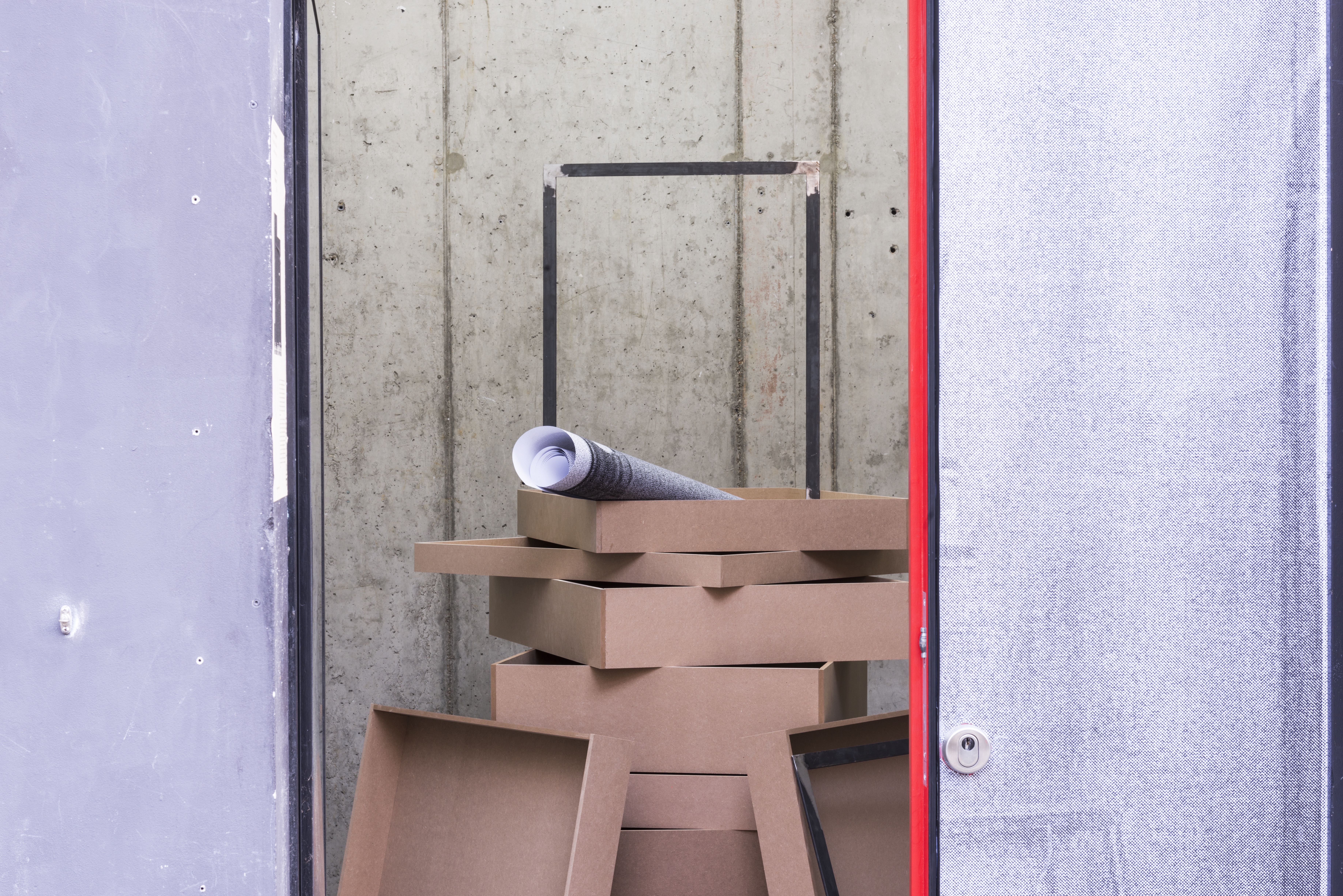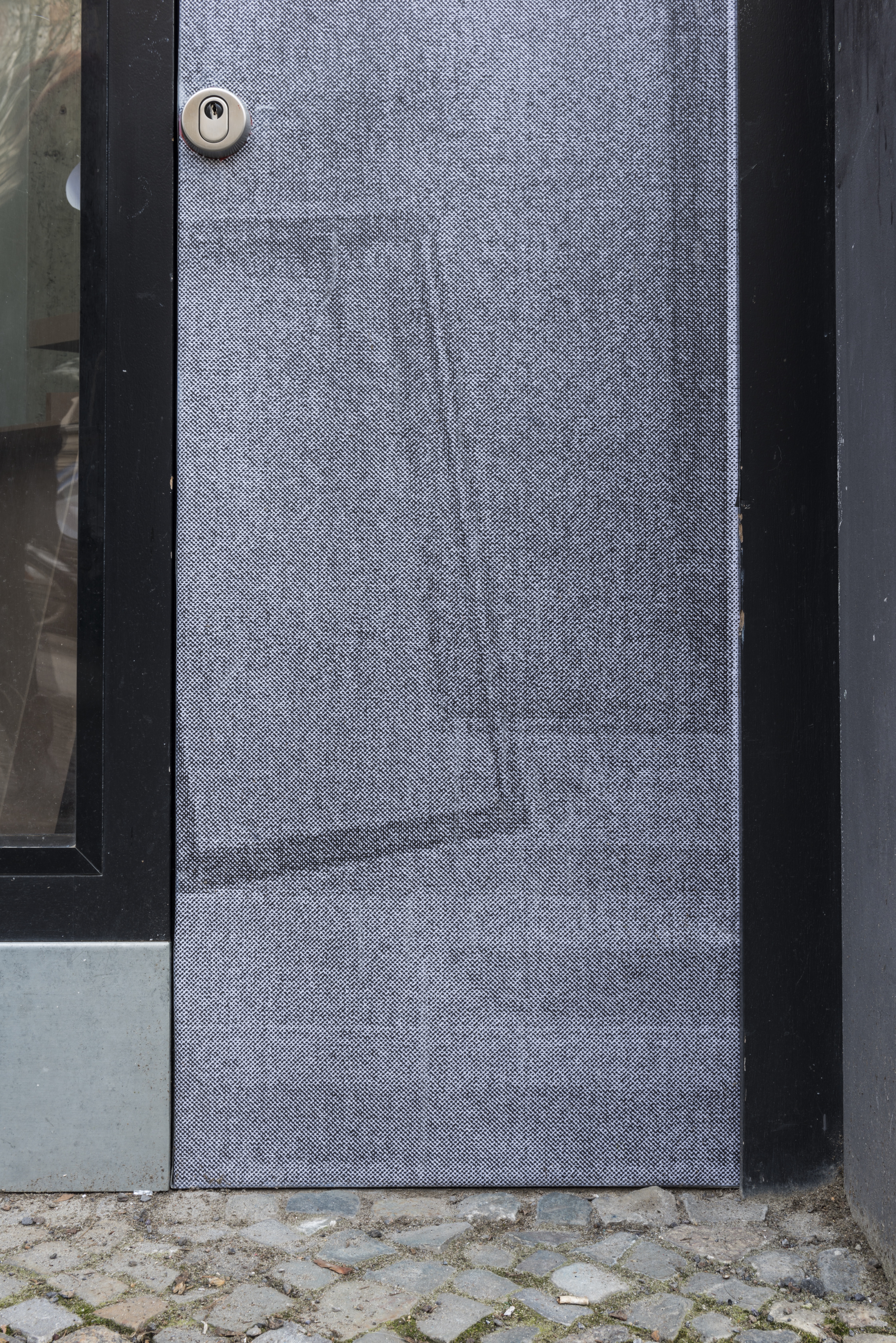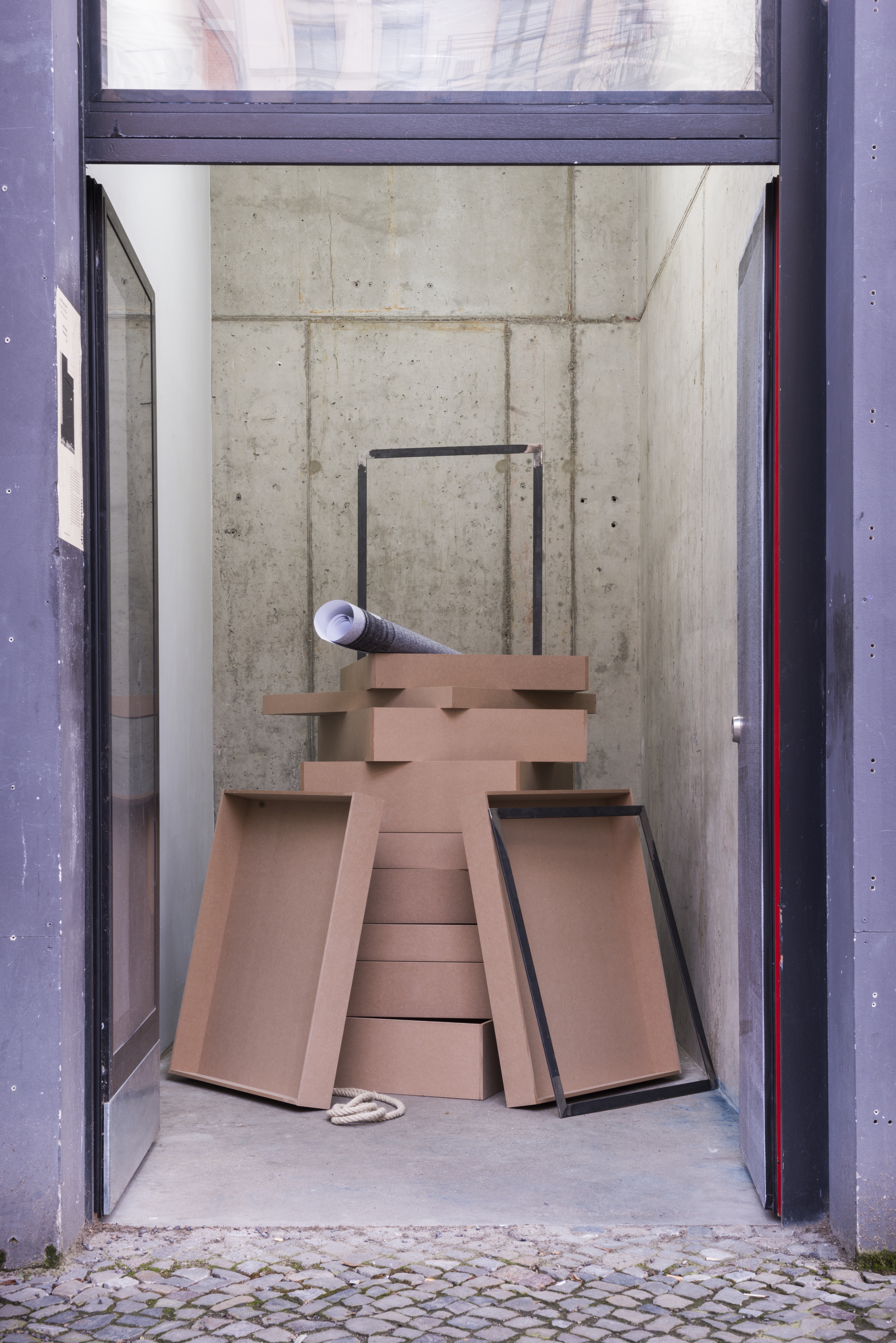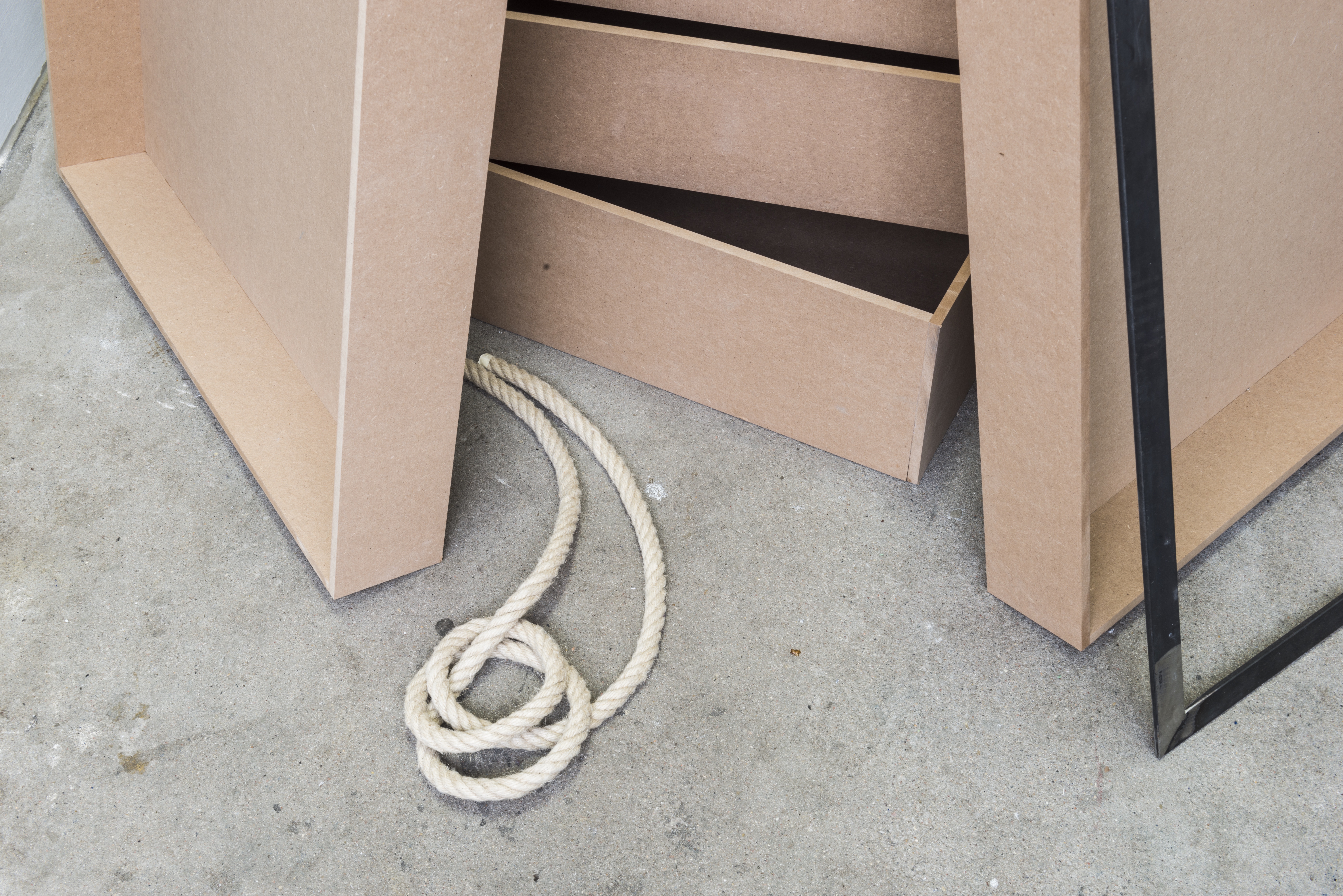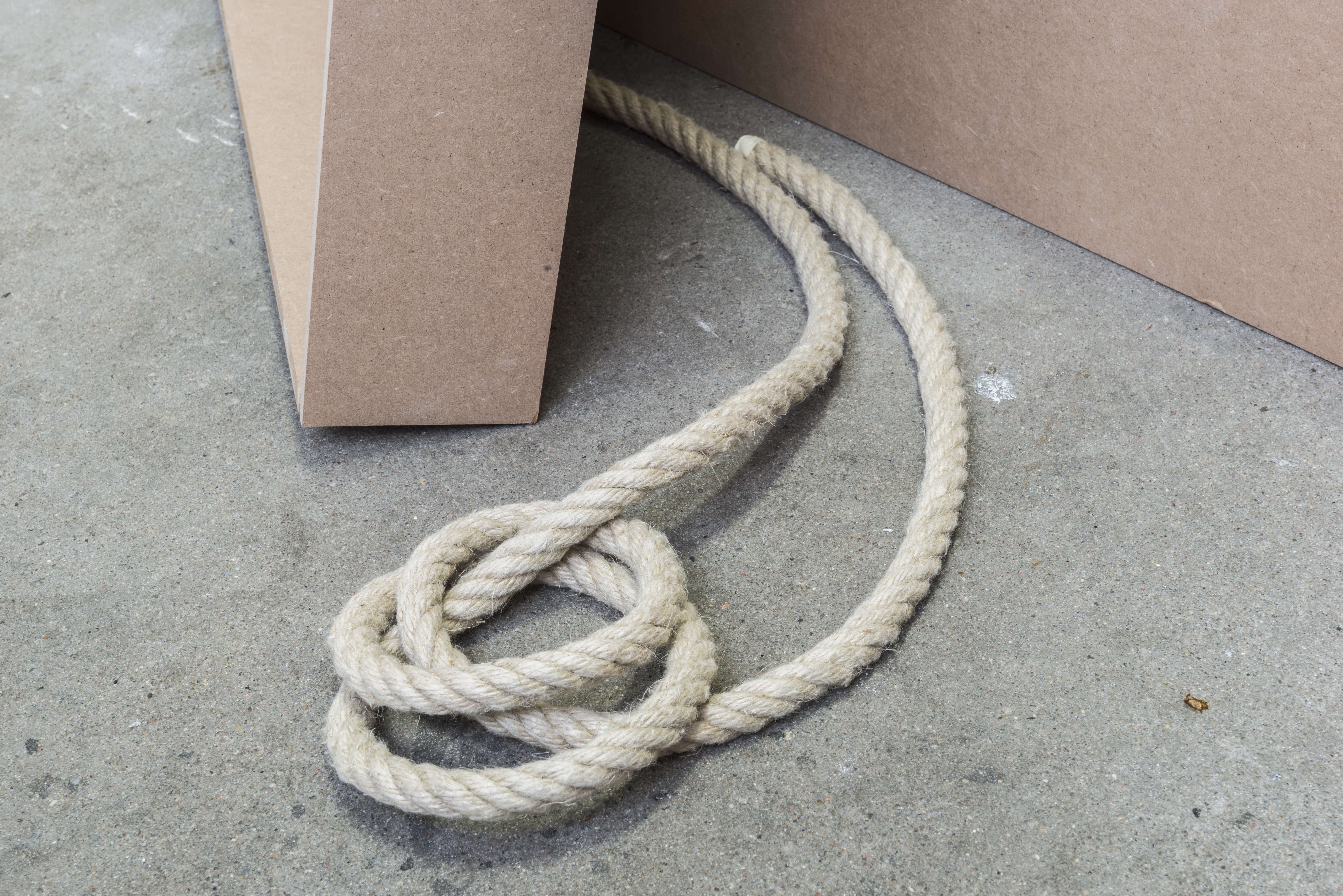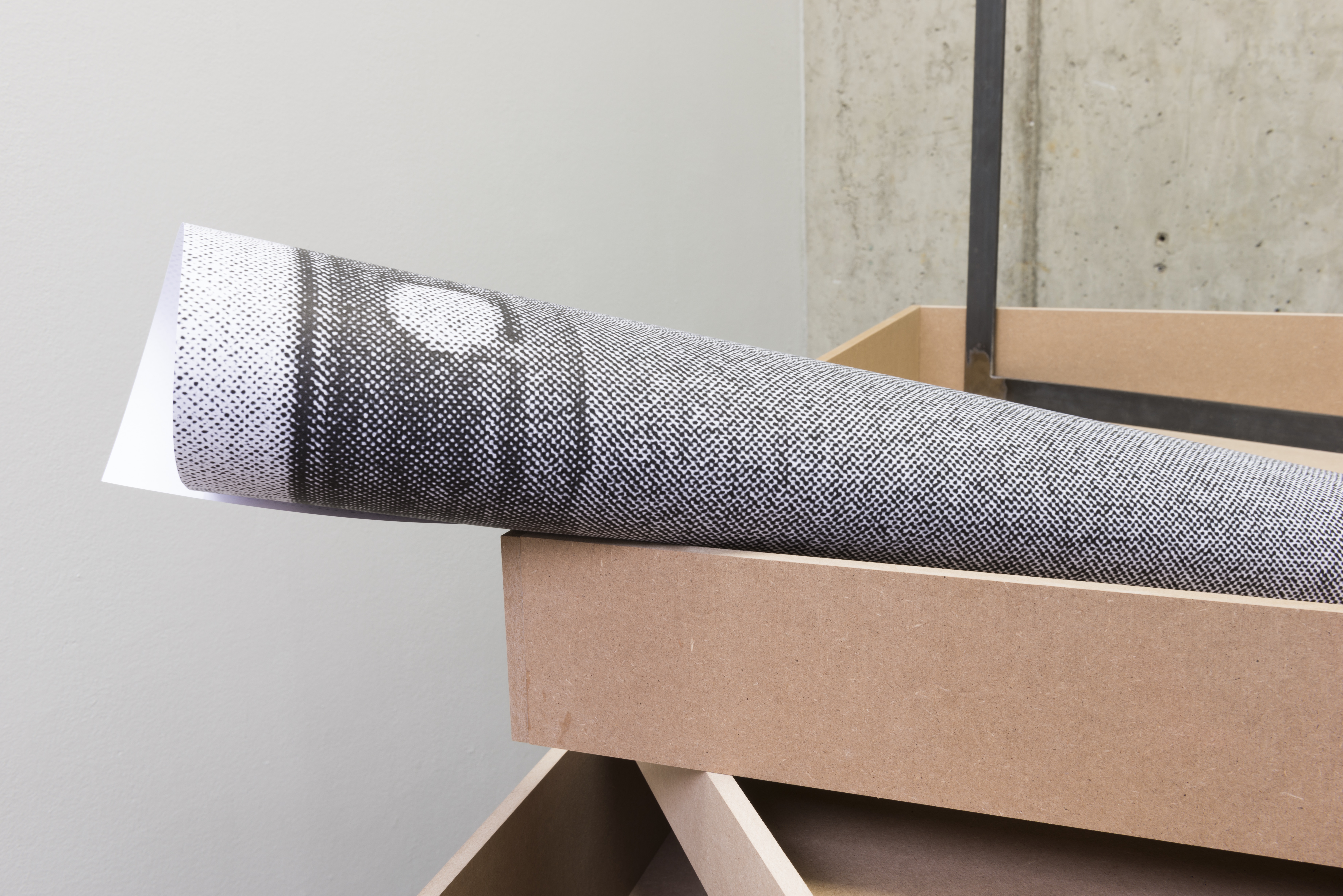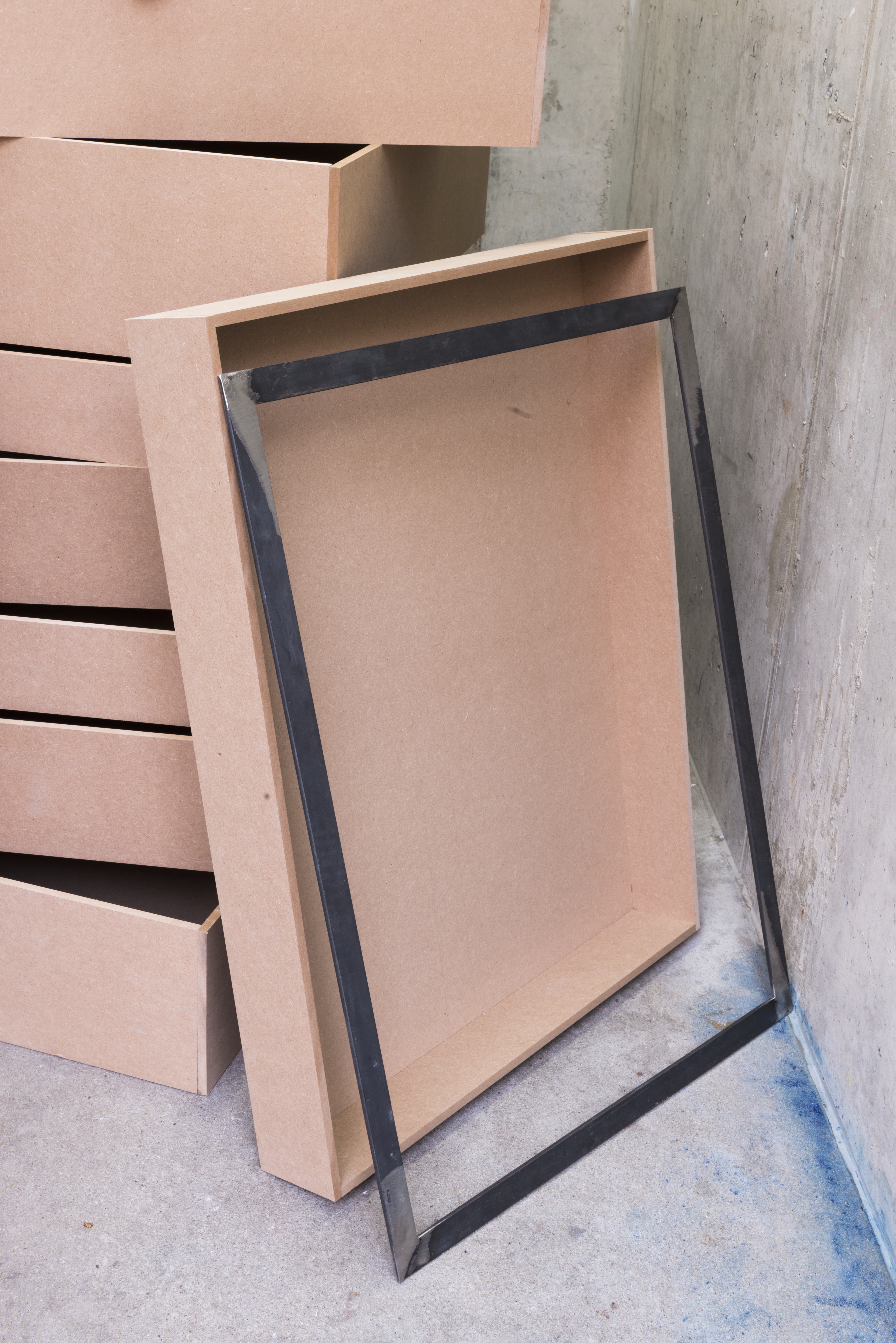Based on in-depth archival research, which is eventually distilled
into abstract material forms. This space to be filled with Velox
prints refers to the history of photography and, more precisely, to
an archival cyanotype taken by Thomas Smillie – the Smithsonian
Institute’s staff photo-grapher – who became the museum’s first
curator of photography in 1896. Smillie’s documentation of
objects and museum activities ranges from art historical to
scientific subjects, all of which he afforded equal importance.
The cyanotype in question depicts a seemingly carefully arranged stack of empty museum showcases. For her installation Hurth plays with the repetitive aspect of the cyanotyp – displaying a display of display cases – as well as the obvious display character of die raum. The pictorial information of the cyanotype is repeatedly copied, re-scaled, re-modelled, translated and condensed into material forms and new pictorial content.
This space to be filled with Velox prints is part of Dominique Hurth’s ongoing research in the archives of the Smithsonian, and reflects her strong interest in exhibition display, object biography and the epistemologies that inform the way we categorize and order things.
(Text Lotte Møller)
The cyanotype in question depicts a seemingly carefully arranged stack of empty museum showcases. For her installation Hurth plays with the repetitive aspect of the cyanotyp – displaying a display of display cases – as well as the obvious display character of die raum. The pictorial information of the cyanotype is repeatedly copied, re-scaled, re-modelled, translated and condensed into material forms and new pictorial content.
This space to be filled with Velox prints is part of Dominique Hurth’s ongoing research in the archives of the Smithsonian, and reflects her strong interest in exhibition display, object biography and the epistemologies that inform the way we categorize and order things.
(Text Lotte Møller)
This space to be filled with Velox Prints
2016 mdf, flat iron, digital prints, rope dimension variable
Installation views: Die Raum, Berlin
2016 mdf, flat iron, digital prints, rope dimension variable
Installation views: Die Raum, Berlin
